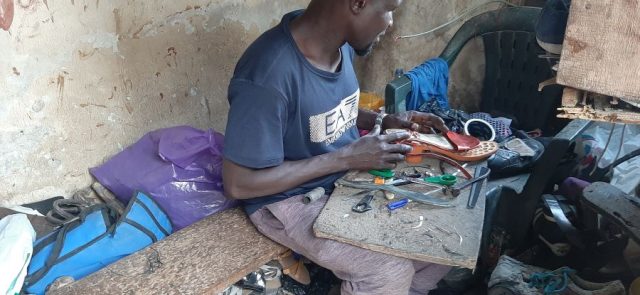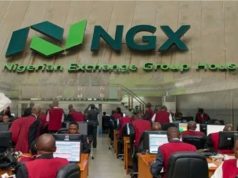
THUR, 17 NOV, 2022-theGBJournal| The National Bureau of Statistics (NBS) has released Nigeria’s latest poverty index, (The 2022 MULTIDIMENSIONAL POVERTY INDEX). The Index reflects the dire poverty level Nigerians are enmeshed in, which as underscored by the report, is multidimensional.
According to the National MPI 2022, 62.9% of people, just under 133 million people, are multidimensionally poor, meaning that they experience deprivations in more than one dimension, or in at least 26% of weighted indicators.
The average deprivation score among poor people, which shows the intensity of poverty, is 40.9%. The National MPI is 0.257, showing that poor people in Nigeria experience just over one quarter of all possible deprivations.
Despite the country being the largest economy in Africa. The country’s per capita incomes, or average incomes, have remained low at around US$2,000 per person, compared to US$5,656 in South Africa (World Bank,. n.d.-a). This has had severe implications for incomes and for poverty reduction, according to the report.
‘’15% of poor people are near to the poverty line—their deprivation score is less than 30%, and the poverty cutoff is 26%. Fully 79% of poor people have a deprivation score that is less than 50%, but over a fifth of poor people experience deprivations in at least half of the dimensions or weighted indicators,’’ NBS said in the report.
How are people poor?
‘’Over half of the population are poor and deprived in cooking fuel. High deprivations are also apparent in sanitation, time to healthcare, food insecurity and housing. Deprivations in the work and shocks dimension tend to be lower at a national level, but this varies, across subnational regions,’’ NBS said in the report seen by the G&BJournal today.
Multidimensional poverty is higher in rural areas, where 72% of people are poor, compared to 42% of people living in urban areas. Approximately 70% of Nigeria’s population live in rural areas, and 30% in urban areas. Yet rural areas are home to 80% of people living in poverty, and their intensity of poverty is also higher, at 42% in rural areas compared to 37% in urban areas.
The NBS suggests investing in rural areas as essential to reducing multidimensional poverty, but notes that strategies to reduce MPI in rural areas are slightly different from urban strategies.
It says, Urban areas have relatively higher security shocks and unemployment than rural areas. While health deprivations are worryingly high in both areas, food insecurity is relatively even higher in urban areas. Other priorities which would help tackle poverty the most include getting children into school, and addressing needs for sanitation, clean energy, and safe, reliable water sources. Rural priorities would also include skills training and lifelong learning opportunities for adults who never completed primary schooling, and good quality housing materials.
The Statistics office notes that Sixty-five percent of poor people (86 million), live in the North, while 35%, nearly 47 million, live in the South.
It says the disparities between zones are greater than those between rural and urban areas. In the least-poor zone, the South West, the MPI of 0.151 shows that poor people experience 15% of possible deprivations, while in North East and North West, the MPI of 0.324 shows they experience over 32% of possible deprivations.
‘’In general, a disparity between North and South is evident in both the incidence and intensity of multidimensional poverty, with the North being poorer. However, the level and number of poor people needs to be addressed in all zones—each of which are home to between 11 and 20 million poor people except North West, which has 45 million poor people due to its larger population and higher level of poverty.’’
‘’Poverty levels across States vary significantly,’’ NBS said ‘’with the incidence of multidimensional poverty ranging from a low of 27% in Ondo to a high of 91% in Sokoto.’’
Indicator priorities vary quite widely between States with very similar poverty levels, so interventions should be tailored to the deprivation profiles of each State.
NBS suggests that for accurate budgeting and planning, it is vital to consider how many people are poor, alongside their level of poverty.
The 10 poorest senatorial districts are located in eight States, and the incidence of poverty varies from 83.6% in Taraba North to 96.3% in Bayelsa West.
The poorest districts also have the highest intensity of poverty, each poor person is deprived in 51% of the dimensions in Kebbi South and Bayelsa West.
On disability status, the NBS notes that seventy-one percent of people living in households with at least one person living with a disability (PLWD) are poor, compared to 62% of people who live in households where no one is living with a disability.
Among people living in households where at least one person is living with a disability (PLWD), the work and shocks indicators contribute more to poverty than other indicators.
In ten out of fifteen poverty indicators, deprivation rates are clearly higher for people in households with a PLWD.
According to the 2018/19 national monetary poverty line, 40.1% of Nigerians are poor, while 63% are multidimensionally poor according to the National MPI 2022. 40.1% of Nigerians are poor according to the 2018/19 pre-pandemic national monetary poverty line, while 63% are multidimensionally poor in the National MPI 2022.
Twitter-@theGBJournal| Facebook-The Government and Business Journal|email: gbj@govbusinessjournal.ng|govandbusinessj@gmail.com









